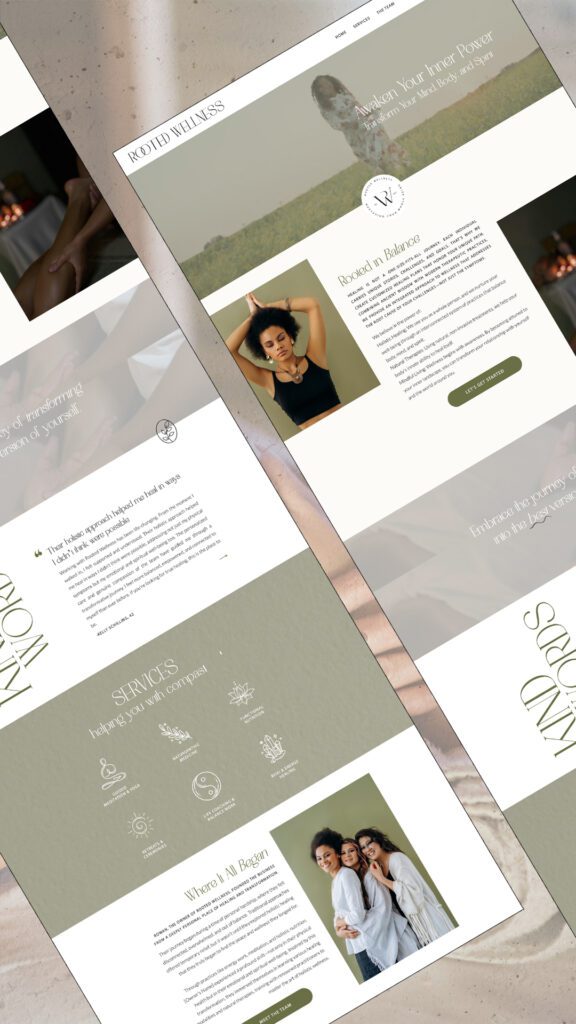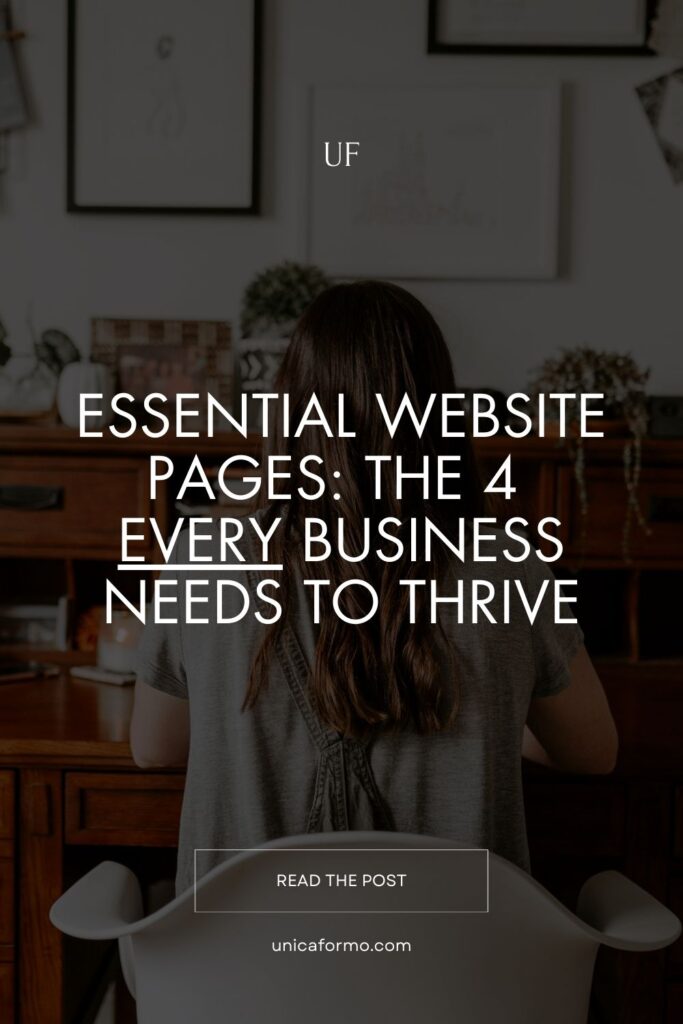When it comes to building or redesigning your website, it’s easy to get caught up in the bells and whistles. Do you need a blog? A shop? A portfolio? While those extras might be useful, there are four essential website pages that every business must have—no exceptions. These pages are the backbone of your online presence. They guide visitors, build trust, and help convert browsers into buyers.
Let’s explore why these essential website pages are non-negotiable, what to include on each one, and how to structure them for maximum impact.
1. Home: The Foundation of Essential Website Pages
Your Home page is the digital equivalent of a handshake and a smile. It’s the first thing visitors see and sets the tone for their entire experience. Within seconds, it needs to communicate who you are, what you offer, and why they should stick around.
What to Include:
- Hero Section: Start with a headline that speaks directly to your audience’s needs and a subheading highlighting the transformation you offer. Include a clear call-to-action (CTA) like “Learn More” or “Get Started.”
- Brief Introduction: A short paragraph about your business, written in a way that focuses on the visitor. What can you do for them?
- Mini About Section: I personally recommend including a small About preview here. A photo and a few sentences about your story or mission can build authority and trust. Link this section to your full About page.
- Key Offerings: Highlight your top services or products with clickable summaries that direct visitors to your Offerings page.
- Social Proof: Add a testimonial or noteworthy accomplishment to establish credibility right away.
- Navigation to Next Steps: Wrap up with clear CTAs guiding visitors to explore more—whether that’s your About page, Offerings, or Contact page.
Pro Tip: Always include a CTA on every page. Whether it’s “Schedule a Consultation,” “Download Your Freebie,” or “Join the Newsletter,” make sure visitors know what to do next.
2. About: The Story Behind You and Your Business.
Your About page isn’t just about you—it’s about why you’re the perfect fit for your ideal clients. This is where you share your story, values, and what sets you apart.
What to Include:
- Your Why: Open with a statement that explains why you do what you do and how it benefits your audience.
- Your Story: Share your journey, but keep it relevant to your audience. How does your experience equip you to serve them?
- Your Values: Highlight the principles that guide your work. This humanizes your brand and helps attract like-minded clients.
- Testimonials: Including additional testimonials here is never a bad idea. The more trust you can build, the better.
- A Personal Touch: Add a professional photo (or team photo) and include a few relatable details about yourself.
- CTA to Services or Contact: End with an invitation to explore your Offerings or reach out.
3. Offerings: The heart of it all.
Your Offerings page is where you clearly outline how you can help. Whether it’s called “Services,” “Programs,” or something else, this page needs to be clear, compelling, and easy to navigate.
What to Include:
- Introduction: Start with a brief overview of how your offerings solve problems or meet desires.
- Breakdown of Services/Programs: For each service or program, include:
- A clear title
- A short description of what’s included
- The benefits or transformation clients can expect
- Lastly, A starting price (optional) or CTA to inquire further
- Testimonials: Sprinkle in client success stories or case studies to build credibility.
- FAQs: Answer common questions to ease any doubts.
- CTA: End with a strong CTA, such as “Schedule a Call” or “Get Started Today.”
4. Contact: Closing the Loop on Essential Website Pages
Your Contact page is the bridge between curiosity and action. It’s your invitation for visitors to take the next step.
What to Include:
- Warm Intro: A friendly sentence encouraging visitors to reach out.
- Contact Form: Include fields for name, email, and a short message. Additionally, you can also add specific fields for different types of inquiries (e.g., services, collaborations).
- Alternative Contact Options: Provide an email address, phone number, or physical location (if applicable).
- Social Media Links: Make it easy for visitors to connect with you elsewhere.
- Additional Testimonials: If you have space, adding a glowing review here can give visitors the final nudge to reach out.
- Reassurance: Include a note about your typical response time to set expectations.

Why These Essential Website Pages Matter
These four pages work together to create a seamless, trustworthy experience for your audience. They ensure that your website:
- Provides Clarity: Visitors immediately know who you are and what you offer.
- Builds Trust: Personal touches and clear information foster credibility.
- Guides Action: Strategically placed CTAs help visitors take the next step.
- Supports Growth: Once these essentials are in place, you can expand with additional pages like blogs, portfolios, or shops.
Pro Tip: The more trust you can build with a visitor, the better. Don’t be afraid to include testimonials across multiple pages, offer a free resource, or encourage newsletter sign-ups to stay connected.
With these four essential website pages, your site can communicate effectively, connect meaningfully, and convert effortlessly. Ready to create a website that works for you? Let’s get started!
Pin for Later:




